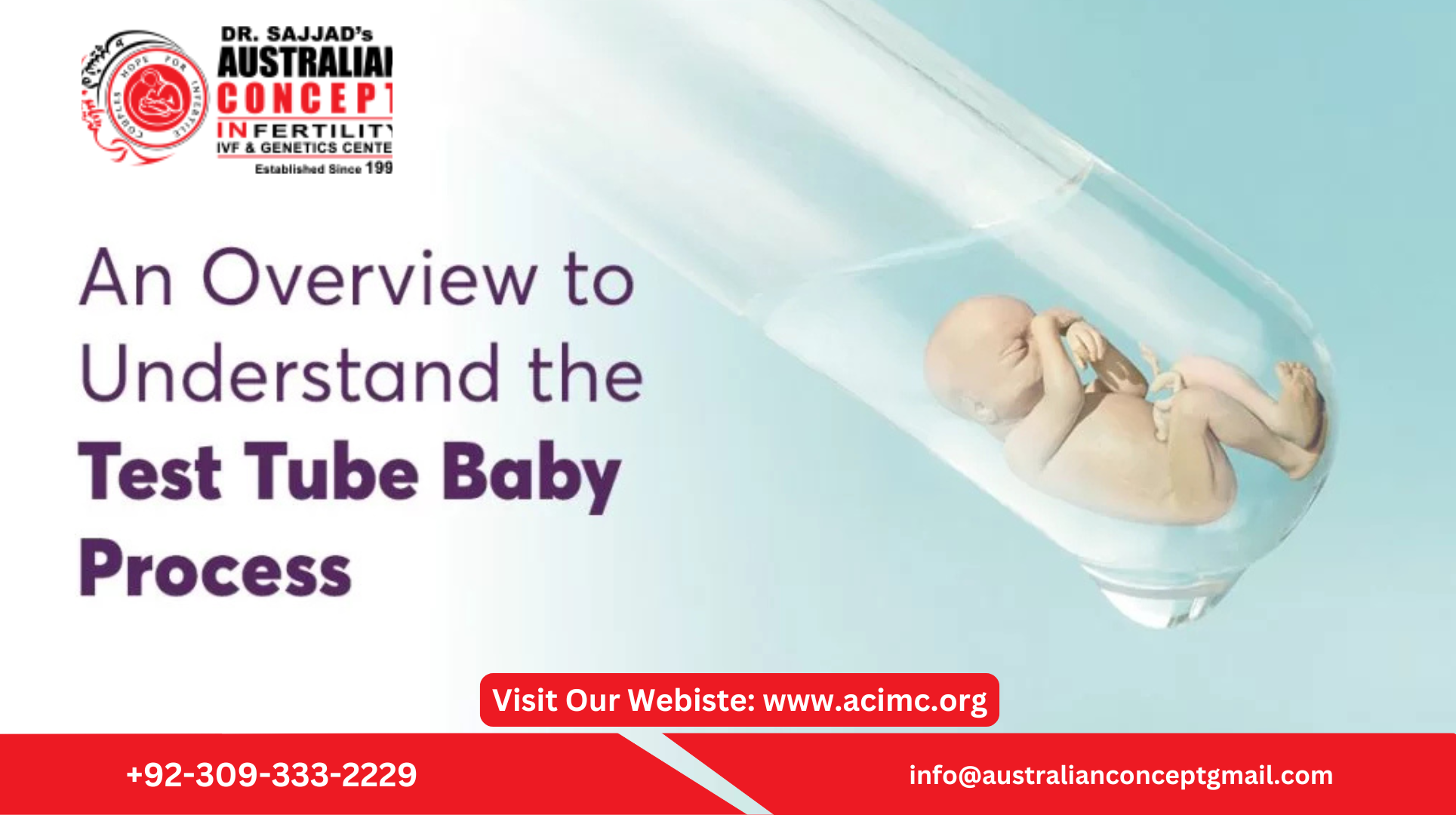What Are the Steps Involved in the Test Tube Baby Process in Pakistan

Test tube baby procedure, also known as in vitro fertilization (IVF), have provided hope to many couples struggling with infertility. This advanced fertility treatment has become a lifeline for those facing challenges in conceiving naturally. In Pakistan, the process of IVF is highly effective and widely available at renowned fertility clinics such as the Australian Concept Infertility Medical Center in Lahore. However, understanding the steps involved in IVF treatment can help potential parents feel more informed and confident about the journey ahead. Here, we take a look at the key stages of the test tube baby process in Pakistan.
Step 1: Initial Consultation and Assessment
The first step in the test tube baby process is the initial consultation with an infertility specialist. During this appointment, your doctor will review your medical history, discuss your fertility concerns, and conduct tests to assess both partners' fertility. These tests may include a semen analysis for the male partner and various diagnostic tests for the female partner, such as blood tests, ultrasound scans, and a hysterosalpingogram (HSG) to evaluate the health of the uterus and fallopian tubes.
The results of these tests will help the fertility specialist determine if IVF is the best option for you and which specific treatment plan should be followed.
Step 2: Ovarian Stimulation
For IVF treatment to be successful, multiple eggs need to be harvested from the female partner's ovaries. To achieve this, ovarian stimulation is performed using fertility medications such as gonadotropins. These drugs help stimulate the ovaries to produce several mature eggs instead of the typical one egg that is released during a natural cycle.
The doctor closely monitors the response to the medication through frequent blood tests and ultrasound scans to check the growth and development of the follicles (egg sacs). This step typically lasts for about 10-14 days.
Step 3: Egg Retrieval
Once the eggs have matured, a procedure called egg retrieval (aspiration) is performed. This is a minor surgical procedure done under local anesthesia or sedation. The doctor uses a thin needle inserted through the vaginal wall to collect the eggs from the ovaries. The procedure is usually quick, and most women can return home the same day.
After egg retrieval, the eggs are immediately sent to the laboratory for fertilization.
Step 4: Sperm Collection and Fertilization
On the same day as the egg retrieval, the male partner is required to provide a semen sample. The sperm is then processed and prepared in the laboratory. In cases of male infertility, techniques like ICSI (Intracytoplasmic Sperm Injection) may be used, where a single sperm is injected directly into an egg to facilitate fertilization.
After fertilization, the embryos begin to grow and develop in the laboratory for 3-5 days. The embryologist monitors the embryos closely, selecting the healthiest and most viable embryos for transfer.
Step 5: Embryo Transfer
Once the embryos are ready, the doctor will decide how many embryos to transfer to the uterus. Typically, one or two embryos are selected to increase the chances of successful implantation. The embryo transfer is a relatively simple procedure that does not require anesthesia. The doctor uses a thin catheter to place the embryos into the woman's uterus.
After the transfer, the woman may be asked to rest for a short time, but most can resume normal activities within a day or two.
Step 6: Pregnancy Test and Follow-up
About 10–14 days after the embryo transfer, a pregnancy test (blood test) is conducted to check for the presence of the pregnancy hormone (hCG). If the test is positive, the woman will undergo further tests and ultrasounds to confirm the pregnancy and monitor its progress.
In case of a negative result, the fertility specialist will discuss the next steps, which may include trying another IVF cycle or exploring other treatment options.
Step 7: Post-Transfer Care and Monitoring
After a successful pregnancy test, regular follow-ups and monitoring will continue to ensure the health and wellbeing of both the mother and the baby. In some cases, hormone support may be provided to help maintain the pregnancy in the early stages.
For couples who experience difficulty with embryo implantation, the doctor may recommend additional treatments such as embryo freezing or genetic screening to enhance the chances of success.
Conclusion:
The test tube baby process, or IVF treatment, is an intricate and personalized procedure that involves several carefully planned steps. From initial consultation and ovarian stimulation to egg retrieval, fertilization, embryo transfer, and pregnancy confirmation, each phase plays a crucial role in increasing the chances of a successful pregnancy.
In Pakistan, especially in reputable fertility centers like Australian Concept Infertility Medical Center in Lahore, IVF has become an accessible and successful option for couples struggling with infertility. With the help of experienced specialists, advanced technology, and comprehensive care, many couples have successfully realized their dreams of parenthood.
If you're considering IVF treatment in Lahore or have questions about the process, it is important to consult with a qualified fertility specialist to discuss your options and make an informed decision. Every step in the IVF journey brings you closer to the possibility of starting or expanding your family.
- Art
- Causes
- Crafts
- Dance
- Drinks
- Film
- Fitness
- Food
- Games
- Gardening
- Health
- Home
- Literature
- Music
- Networking
- Other
- Party
- Religion
- Shopping
- Sports
- Theater
- Wellness


